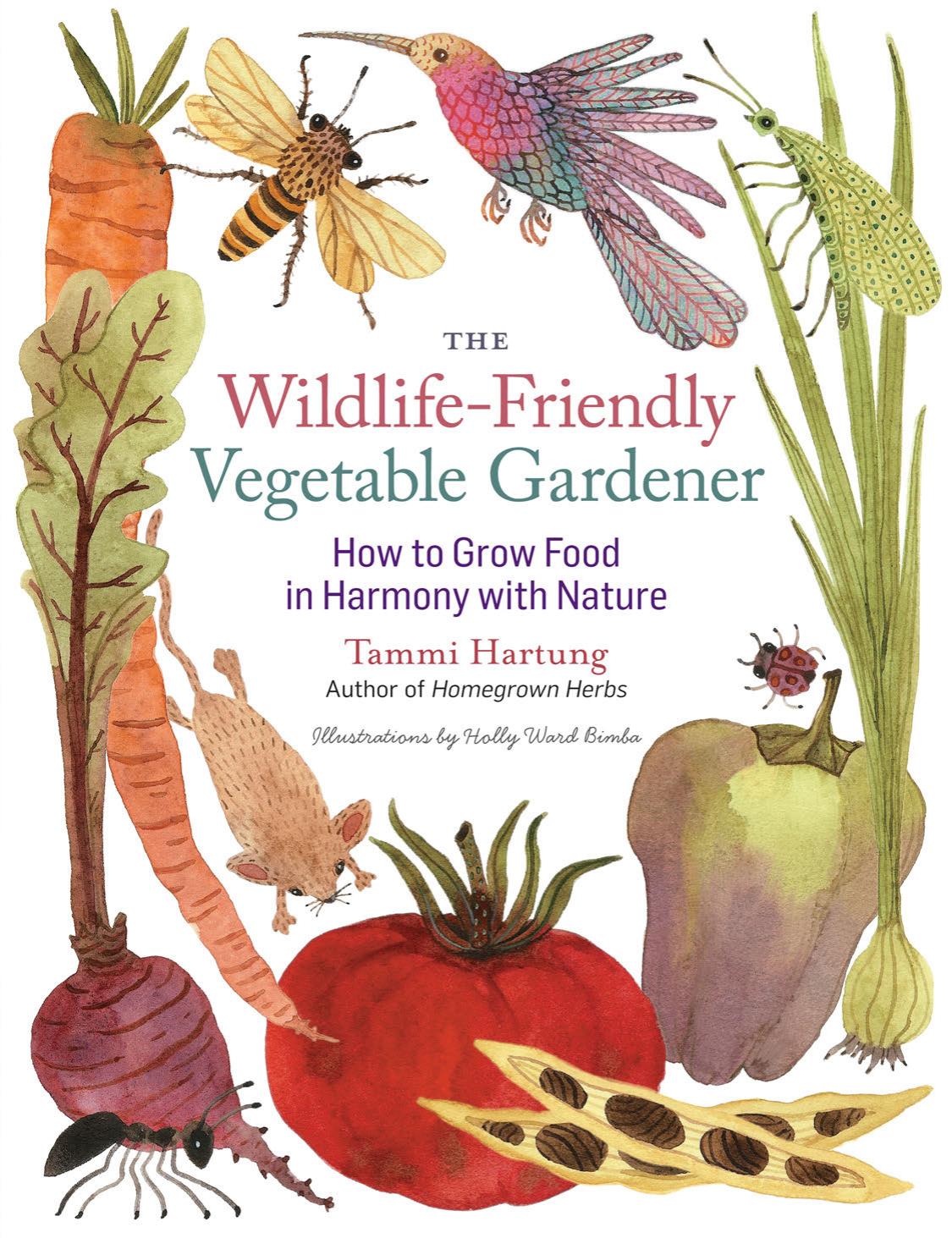The Wildlife-Friendly Vegetable Gardener by Tammi Hartung

Author:Tammi Hartung
Language: eng
Format: epub, pdf
Tags: grow food, vegetables, coexist with wildlife, environment, create wildlife habitats, beneficial relationships, smart planting, plant, sow, pollinators, garden habitat, harvest, nature, gardening with nature, beneficial insects
Publisher: Storey Publishing, LLC
Published: 2013-12-09T16:00:00+00:00
Don’t Be So Tidy
An easy way to provide food is to leave all the seed heads and stalks on perennial plants through the winter. The seeds offer a nutritious food supply to birds, small mammals such as squirrels and raccoons, and even deer to some extent. Plus the birds collect bits and pieces of leaves, twigs, stalks, seed-hair fluff, and so on, which they expertly weave into nests in which to raise their young.
Resist the urge to tidy up the garden in late fall. As an added benefit, the dead stalks of perennials offer protection to a plant’s crown in winter, helping to shield it from the harshest winds and intense sunlight when there’s no snow cover. The extra protection may also reduce winter kill. I do remove the annuals that have finished their growing season. They can harbor diseases, and I don’t want them to spread unwanted seeds throughout the garden.
Chris and I love to watch the birds, so most of these little bird gardens are located where we can see them from windows throughout the house and the back porch. However, they are more than places from which to watch the birds, even though that is quite nice. The wild birds are an integral part of our conservation and pestmanagement protocols both for our food gardens and for our perennial-seed crops. They are a formalized part of our USDA organic-certification plan, too. We want the birds around in abundance so that they will forage on the pests that might otherwise cause us a great deal of trouble by damaging our food plants and seed crops. By leaving the task of pest management in the beaks of the wild birds, we find that there are very few times when we have to manage pests through other measures like organic pesticides.
Download
The Wildlife-Friendly Vegetable Gardener by Tammi Hartung.pdf
This site does not store any files on its server. We only index and link to content provided by other sites. Please contact the content providers to delete copyright contents if any and email us, we'll remove relevant links or contents immediately.
| Container Gardening | Hydroponics |
| Organic | Propagation & Cultivation |
| Topiary | Urban |
| Water Gardens & Ponds |
Turbulence by E. J. Noyes(7918)
The Thirst by Nesbo Jo(6806)
Gerald's Game by Stephen King(4554)
Be in a Treehouse by Pete Nelson(3922)
Marijuana Grower's Handbook by Ed Rosenthal(3605)
The Sprouting Book by Ann Wigmore(3529)
The Red Files by Lee Winter(3356)
The Remains of the Day by Kazuo Ishiguro(3279)
Sharp Objects: A Novel by Gillian Flynn(2939)
Christian (The Protectors Book 1) by L. Ann Marie(2644)
Organic Mushroom Farming and Mycoremediation by Tradd Cotter(2616)
The Culinary Herbal by Susan Belsinger(2420)
Stone Building by Kevin Gardner(2336)
The Starter Garden Handbook by Alice Mary Alvrez(2269)
Lilac Girls by Martha Hall Kelly(2243)
The Unlikely Pilgrimage of Harold Fry by Rachel Joyce(2202)
The Lean Farm Guide to Growing Vegetables: More In-Depth Lean Techniques for Efficient Organic Production by Ben Hartman(2084)
Urban Farming by Thomas Fox(2054)
Backyard Woodland by Josh VanBrakle(1879)
